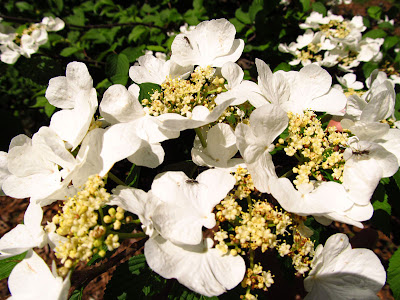Hidden down a dirt county road in Lawrence County is Alabama's largest cedar glade,
Prairie Grove Glades. We've been in love with
cedar glade ecology since our years living in middle Tennessee and considered this quite the find when we discovered it back in March of 2010.
Esther was nice enough to come over to my desk and help me identify several of these- but there are two that remain a mystery. (Feel free to comment if you recognize them.)
 |
| Blue-eyed grass |
 |
| Long-leafed Summer bluet |
 |
| Reindeer moss next to a mystery plant |
 |
| Alabama glade cress |
Here are the two that we could not identify. This little purple dude...
UPDATE 4/24: I believe this is
small skullcap.
And this, the mystery plant that has yet to bloom. This is the same one next to the reindeer moss above. You'd think with leaves like that it would be easy to find, but no.
 |
| Purple topped Nashville breadroot |
 |
| Wood sorrel |
 |
| Sunnybells |
I found this and one like it nested inside some moss. I don't know if it's a structure of the moss itself or some foreign organism. I'm waiting to hear back form my moss expert on this one as Google wasn't much help.
 |
| Stonecrop (pink sedum) |
 |
| Vinca |
UPDATE 4/24: I found
this site from
Vanderbilt University as a great resource for cedar glade plant identification. Tennessee and Alabama share many of the same plants and ecologies.
Older pictures of the glade:
March 2010
November 2010
Prairie Grove at Google Maps
Our primary location of the day was the
TVA Nature Loop in Florence where we were to attend an "herb hike". The actual experience was less hike and more a 30 yard meander and frankly I did not learn a new thing. I'll not name names, but our host was ill-prepared and inaccurate; something that can be hazardous when it comes to identifying herbs for eating or medicinal usage. Our host was clearly a little flustered and I learned later that they had been drafted at the last moment. Regardless, proper identification of a plant and knowing which parts of the plant that are edible is key. Take the may apple, for example. The flesh of the fruit is edible
but the seeds and roots are poisonous.
I much more enjoyed walking around with Esther, our friend KT, and our daughters on our own self-led walk through the native plants than the planned event. I know I learned more.
 |
| Wild geranium |
 |
| May apple |
 |
| Greek Valerian |
 |
| Lichen |
 |
| Blackberry |
 |
| Azalea |
 |
| Wild ginger "little brown jug" |
Pictures from the day here, y'all.
TVA Nature Loop at Open Street Maps (better trail mapping than Google in this case)





















No comments:
Post a Comment